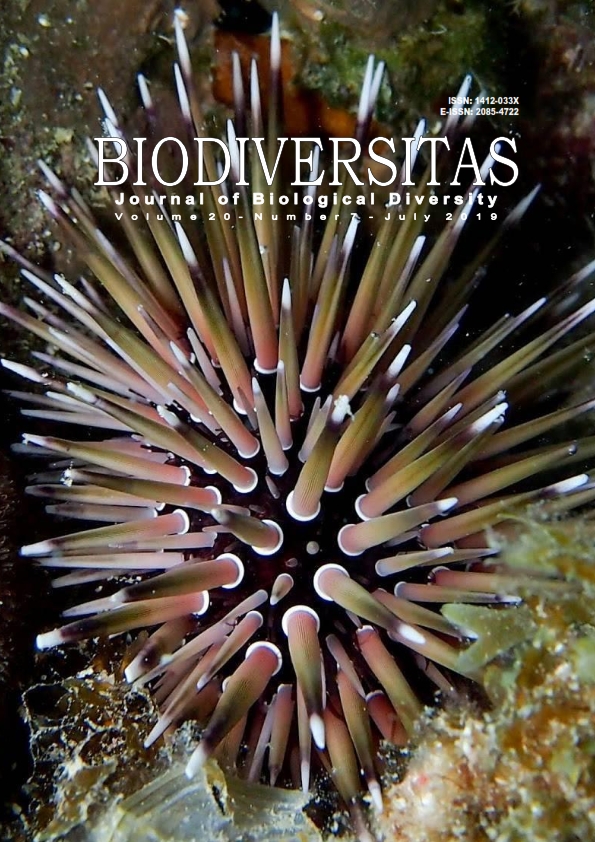Metagenomic analysis of Fusarium oxysporum f.sp. cubense-infected soil in banana plantation, Sukabumi, Indonesia
##plugins.themes.bootstrap3.article.main##
Abstract
Abstract. Effendi Y, Pambudi A, Pancoro A. 2019. Metagenomic analysis of Fusarium oxysporum f.sp. cubense-infected soil in banana plantation, Sukabumi, Indonesia. Biodiversitas 20: 1939-1945. Fusarium wilt is one of the most devastating diseases in banana plantation which caused by soil-borne fungal pathogen Fusarium oxysporum f.sp. cubense. In this study, metagenomic analysis of 16SrRNA gene was performed for comparing composition, richness, and abundance of healthy soils and Fusarium oxysporum f.sp. cubense (Foc)-infected soil microbes in rhizospheral area of banana plants. Data showed about 10969 OTU and 10755 OTU of bacteria were identified in healthy soils and Foc-infected soils respectively. The Foc-infected soils showed higher species abundance than healthy soil (ACE index 73,6 and 68,8 respectively). However, healthy soils have more taxa richness than infected-soil (Fisher index 447,7 and 343,4 respectively). Beta diversity analysis indicated infected-soils had lower bacterial diversity in comparison with healthy soils. About 37 phyla were identified and no statistical difference between both soil conditions in the OTUs abundance. However, Acidobacteria (22%) and Verrucomicrobia (13%) tend more abundance in the health soils in comparison in the infected soils 19% and 10% respectively, whereas Proteobacteria was found more abundance in the infected soil (11%) in comparison with the health soil (7%). Interestingly, high abundance of Xanthomonadaceae, member of Proteobacteria was identified in the infected soils which might have a positive correlation with incidence of Fusarium development in the soils.
